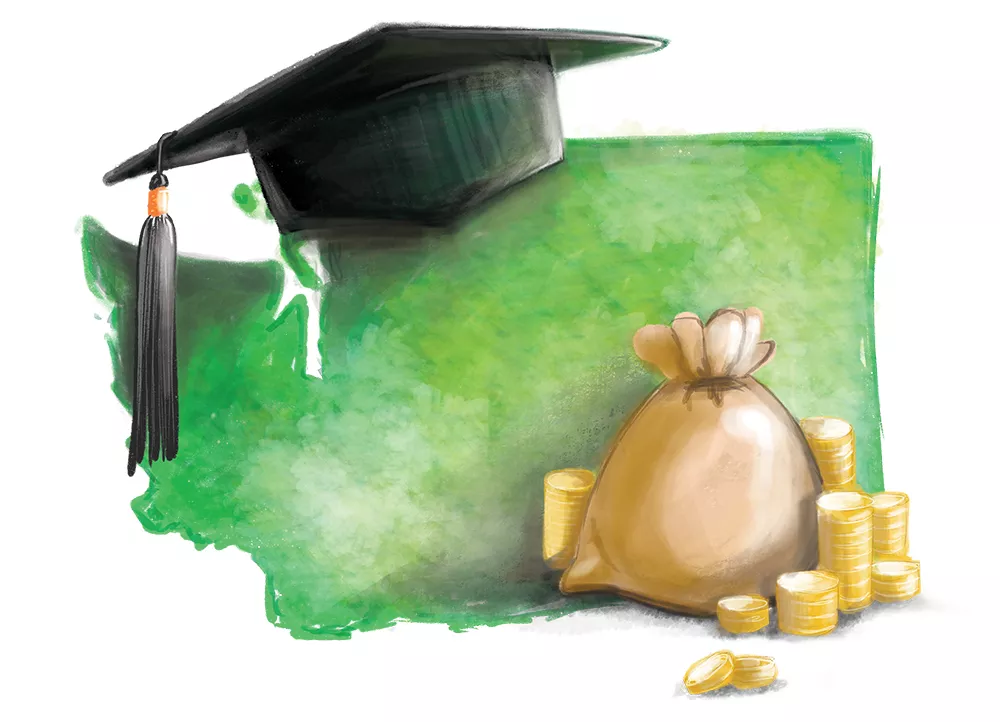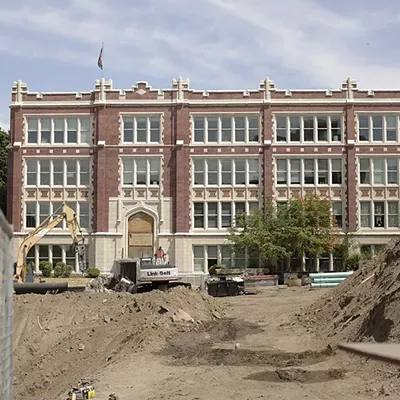When Gavin Pielow chose to go to Washington State University, he knew his parents couldn't afford to pay his tuition. Instead, he thought he'd qualify for state financial aid.
But Pielow, who recently graduated from WSU, never saw that financial aid from the state. He was one of thousands of students who qualified for the Washington State Need Grant each year but was put on a waitlist as the program's funds ran dry.
Now, Pielow is staring at around $27,000 in student loans.
"It was frustrating to see that program consistently underfunded," Pielow says.
That amount of student loan debt is about normal these days for a WSU grad. Other students have had it worse. Pielow says he's heard countless stories about students not being able to afford basic necessities because they have to pay tuition, who have dropped out of college altogether because it wasn't affordable, or who take out so much in loans that it cripples their future.
Those stories, however, are about to become far less common in Washington state. Gov. Jay Inslee signed a bill that will eliminate the wait list for financial aid. More than that, it guarantees that students coming from families making up to the state's median income — $92,000 for a family of four — will receive some state financial aid. And for families of four making $50,000 or less? Their tuition will be completely covered.
The bill's name, the Workforce Education Investment Act, may be yawn-inducing, but it's expected to vastly improve college affordability for low and middle-income families. It gives them incentive to enroll in two or four-year colleges and apprenticeships while reducing their student debt.
Michael Meotti, the executive director of the Washington Student Achievement Council, a state agency focusing on student success, calls it a "quantum leap" in financial aid investment.
"I don't think you will see any other state with a need-based approach to financial aid that reaches into the middle class like this will," Meotti says.
This isn't the first time the state's investment in college institutions has made waves this decade. State Republicans, who controlled the state Senate for years until 2017, focused on reducing the costs of college not through financial aid, but by lowering tuition.
It was nationally significant: As most of the country saw the price of college climb, Washington's students saw it level out or go down.
But Gov. Inslee has been calling for the state Legislature to expand financial aid as well. And now that Democrats control both the House and the Senate, there was some optimism that it could get done this year. The only problem was finding a way to pay for it, says Rep. Drew Hansen (D-Bainbridge Island), chair of the House Higher Education Committee.
The final bill settles on a hike in the state's business and occupation tax for about one-fifth of businesses who pay the B&O tax, with the highest surcharge on companies like Microsoft and Amazon. But those tech giants weren't opposed to the tax; in fact, they cheered the new legislation, with Amazon calling it a "positive step forward" for the state.
It's expected to generate around $1 billion in revenue over four years. That allows the state to create the Washington College Grant starting in 2020, which will replace the State Need Grant. It will eliminate the wait list for the grants by one-third next year and all the way by the following year.
"We want every family in this state to realize that they now have a shot at a college or apprenticeship that they might have thought was out of reach," Hansen says.
A person who has started college but never finished can go back to college more easily under this plan, for instance. And the state grant would be on top of any federal financial aid available — it wouldn't cancel it out. Washington, too, will continue to offer financial aid to those attending private colleges and universities in the state.
Bruce DeFrates, director of financial aid and scholarships at Eastern Washington University, says this is the biggest leap he's seen in state aid in his 20 years there. And it may be particularly beneficial for EWU, where more than 75 percent of undergraduates receive some form of financial aid.
"It pretty much puts Washington at the top of states that are supporting higher ed," DeFrates says. "We've got one of the best state-need programs once this goes into effect."















